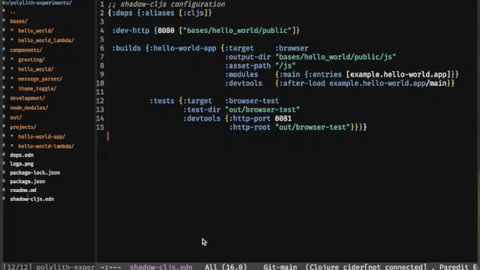I am one of the contributors to an Open Source project called zookeeper. It's an Apache ZooKeeper client made for Node.js. You can find the package on npm and the source code at GitHub.
What’s ZooKeeper?
"Apache ZooKeeper ... providing configuration information, naming, synchronization and group services over large clusters in distributed systems ..."
In short, Apache ZooKeeper is made of two parts: a service, and clients that communicate with it. Included in the packaging from Apache, there is a client made for the Java platform and also a C based client. You will most likely find one for your favorite language out there as a third party Open Source project.
Why joining Open Source?
A couple of years ago, I was part of a team in an organisation that use Apache ZooKeeper heavily. The team maintains a Node.js based app that communicates with a ZooKeeper service.
One day, the app began to raise strange warnings and unexpected errors. We looked into it and found out that the reason was probably caused by the client no longer being compatible with the API of the service.
There wasn't much happening in the client's repository:
unanswered questions from users, issues not taken care of and pull requests not being reviewed.
The project was abandoned.
So, we used a different client that seemed fairly updated and stable. The strange behavior in our app was now gone. Great! It worked on our machines and in production. All good!
🙋"Hey, team. I can't install your app on my Windows machine."
Sometimes other teams need to run our app locally for testing and such things. It turned out that our new client didn't support Windows at all.
Wait a minute, isn't Node.js supported in all major platforms? Well, yes. But this one is building a Native Node.js AddOn using bash scripts. Windows don't have that.
🤦♂️
Even though it wasn't my fault only, all I could think of is that it was my fault. I have ruined it for the teams at this workplace.
What else to do than try fix it on my spare time? So, I grabbed the source code to try to understand what's going on behind the scenes.
😭

And that's how my Open Source journey began: triggered by guilt and feeling ashamed.
Coding in the Dark
Late nights and weekends were spent trying to figure out how to solve this huge problem, including C/C++ code, CMake, bash and node-gyp.
One day, I figured it out. I had succeeded in making it work on Mac OS X, Linux and on Windows! The next day - a sunny morning in beautiful Stockholm - I went to the office smiling. Exhausted by the lack of sleep, but happy.
😎

Do I have to fix everything? 😟
While struggling with the source code, I realized there were more things that should be fixed. By then, I also realized that this Open Source project suffered from similar issues as the one we had replaced earlier: there wasn't really that much activity in the repo.
This is probably a common pattern: you work with something on a daily basis and contribute to Open Source projects. The years go by, you drift way from the project, simply because you now work with other things unrelated to the project.
How to maintain an Open Source project
Instead of grabbing the next task to spend late nights and weekends with, I decided to learn more about how to maintain Open Source projects.
I found a very useful guideline at GitHub, and I began to add notes about all kinds of things I thought should be done. Other Open Source projects were using labels in a way that I liked, so I added labels like help-wanted and good-first-issue to most of the tasks.
I think labels can help people getting an overview of the tasks and to understand the degree of difficulty.
Every time a question comes up, or someone is filing a bug report, I have replied to most of them within a day or two. I think this is important. The person reporting will know there is someone that has actually received and read the message.
As a result, really nice things have happened. The project has received Pull Requests from people located all over the world. Solving a broad variation of things from typos in the docs, to rewrites of the source code to modern JavaScript.
What's happening today?
Today, I think the project is stable and working well. I don't work nights or weekends. Even though I have moved on and no longer work with ZooKeeper as before, the feedback from users is my main inspiration to keep on working. Also, the amount of users of the client looks pretty good.
It inspires me to do the best I can with the project.
Photo by Justin Lim on Unsplash






